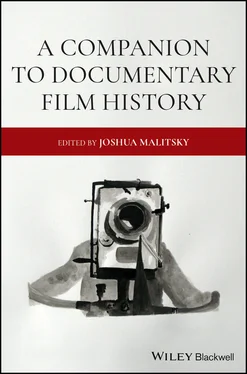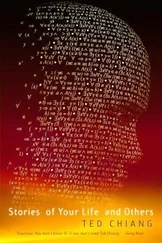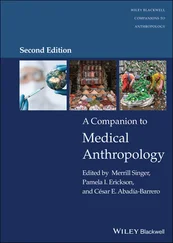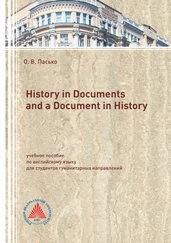Yet after the war, the political press began to underline Laval’s Vichy collaboration and the renewed salience of his name. When the French Communist Party–associated film weekly L’Écran Français published a report in May 1951 about Afrique 50 and the prosecution of Vautier and Vogel, the piece was headlined “Afrique Noire: Zone Interdite par Pierre Laval aux cinéastes” (“Black Africa: A Zone Forbidden by Pierre Laval to Filmmakers”) and described Vautier as an opponent of “all the Laval Decrees of the world, against racism and fascism” (Krier 1951).
Although, at the time it was made, Afrique 50 did not become a model for broader, more sustained networks of radical anticolonial documentary activity, the film did represent an exemplary instance of radical documentary methods for constructing sound and image, and their adaptation to emerging anticolonial mobilizations in French intellectual and cultural life. Indeed, the role of metropolitan intellectuals outside the colonies became more important to the anticolonial struggle than before the war; for documentary filmmakers, then, the task was to reject colonial documentary conventions and to translate into cinematic form the causes of political equality and self‐determination emerging from colonial territories. Combining the form of an educational travelogue with a critical inquiry into the conditions underlying uprisings against police repression, Afrique 50 revived styles of critique and protest from an interwar tradition of international solidarity documentary that linked Joris Ivens, Henri Storck, the Workers Film and Photo League, Nykino, and other practitioners who drew on principles and methods of Soviet documentary production back to Dziga Vertov. 6 In French documentary history, the film’s precedents included the work of the Groupe Octobre and anti‐fascist PCF‐associated political documentary from Popular Front cultural production of the 1930s. 7 Popular Front committed filmmaking, exemplified by La Vie est à nous (dir. Jean Renoir, Jean‐Paul Le Chanois, Jacques B. Brunius, and Jacques Becker, 1936), addressed inequality at the national level but was limited in its engagement with the political context of colonial empire. But countering state‐sponsored colonial documentary called for a form that distinguished its use of sound and images from both the social and material aspects of cinematic representations supporting colonial rule. The regulation of moving image recording that maintained a stark division between metropolitan and colonial territories constituted a problem for the film’s production and may be read as manifest across its form, from the rhetorical address of Vautier’s voice‐over commentary – a challenge to state voice‐over conventions – to its use of montage as part of its committed engagement with collective political activity.
In the film, colonized people are first represented in scenes of village residents taking part in everyday life and then later in organized party demonstrations: the opening offers the viewer a brisk tour, establishing a representation of work and life in and around the village (which is not given a specific identity other than its proximity to the Niger River). Through a series of brief long‐shot sequences, the film shows views of activities over the course of one day, such as brickmaking, bathing, weaving, millet grinding, rope‐making, hair‐dressing, playing ball, and building pirogues. The voice‐over, with a tone of good‐humored instruction, comments on and likens these scenes to what people do as well in the provinces of metropolitan France, for example, by fishermen in the ports of Brittany (Vautier’s native region) or rugby players in Toulouse. By drawing an analogy between daily life in provincial mainland France and in the colonies the film initially follows a commonplace of colonial documentary that instructs metropolitan spectators. Yet the voice‐over also reminds the viewer that this series of images may be recognized as an instance of the “picturesque” (pittoresque), idealized clichéd images contrasted with the reality of economic exploitation and political violence that his film points to as documentary actuality: “You will see very picturesque things, without a doubt, but little by little you’ll come to realize that the picturesque poorly hides great poverty.”
The film’s critique of the imperial political economy follows this initial depiction of tranquil yet impoverished life in the African countryside, of a village “that is still fortunate in its misery” since “there’s still peace.” The film stresses the evidence of a lack of economic resources and the lack of education for children. While the voice‐over acerbically anticipates that such conditions elicit surprise (“You’re surprised to see a village without a school, without a doctor?”), this address is a prelude to scenes of evidence of colonial state violence (bullet holes, blood stains, burnt huts) and to sequences of analytical explanation of colonial economic conditions (colonized laborers perform arduous work and receive meager wages from colonial state capitalist firms) that the film uses to elicit outrage and mobilize sympathy for the anticolonial cause. The film presents an on‐site tracing of the evidence of a specific colonial massacre, in Palaka in the northern Ivory Coast in 1949, that had been carried out by the French colonial police forces, used by the film to represent the threat that “awaits African villages.” The scene of recent atrocities serves as a stage for the voice‐over to direct the viewer to imagine absent scenes of French state violence on African people, as well as on the villages, land, and animals. Throughout Afrique 50 , the specificity of the documentation of the massacre at Palaka continues to characterize the structure of the voice‐over narration. In its mode of address, this principle of naming in speech, of making known names that would otherwise be suppressed by “official images” (and speech) marks the documentary’s aims of denunciation as well as remembrance. The film names both perpetrators, from colonial administrators to colonial companies, and victims, from heroic martyrs to political organizers. The priority that Afrique 50 grants in the voice‐over commentary to the direct designation of names, individually and collectively, and to this style of enunciation, could be said to underpin its model of the politics of truth in documentary representation.
Afrique 50 presents to the viewer an official political party to represent and claim unity for “the African people” as a political actor threatened by and committed to opposing colonial state violence: the mobilizing collective ranks of the African Democratic Assembly (Rassemblement Démocratique Africain, RDA), the mass transterritorial party of imperial citizens founded in 1946 in Bamako in French West Africa. The political party sought to organize people under colonial rule to struggle for greater political autonomy and a form of electoral reorganization that would guarantee equality of rights within the new French Union, as the empire was called after 1946. In alliance with the French Communist Party (PCF) until 1950, the party pointedly did not advocate for sovereign independence from the Union. Aligning with these activities, Afrique 50 can be read as an exposé of colonial administrative atrocities as well as of colonialist‐supported economic exploitation of labor. It therefore stands as an anticolonial solidarity film that contends with the dilemma of speaking from a French metropolitan and an internationalist perspective on the conflicts depicted. It seeks to establish a relation between the sites of metropolitan France and colonial French West Africa, linked in the film by geographic mobility, both at the stage of production and on the level of textual representation.
Читать дальше












